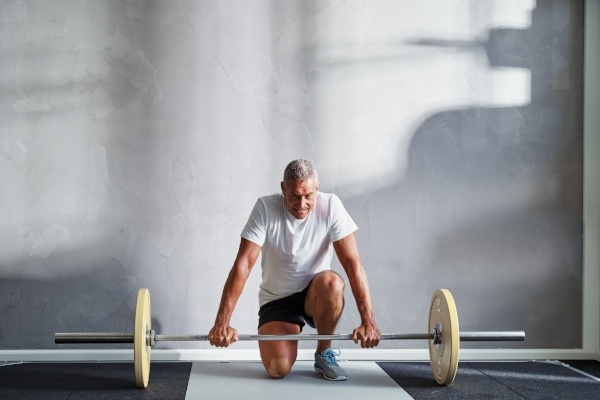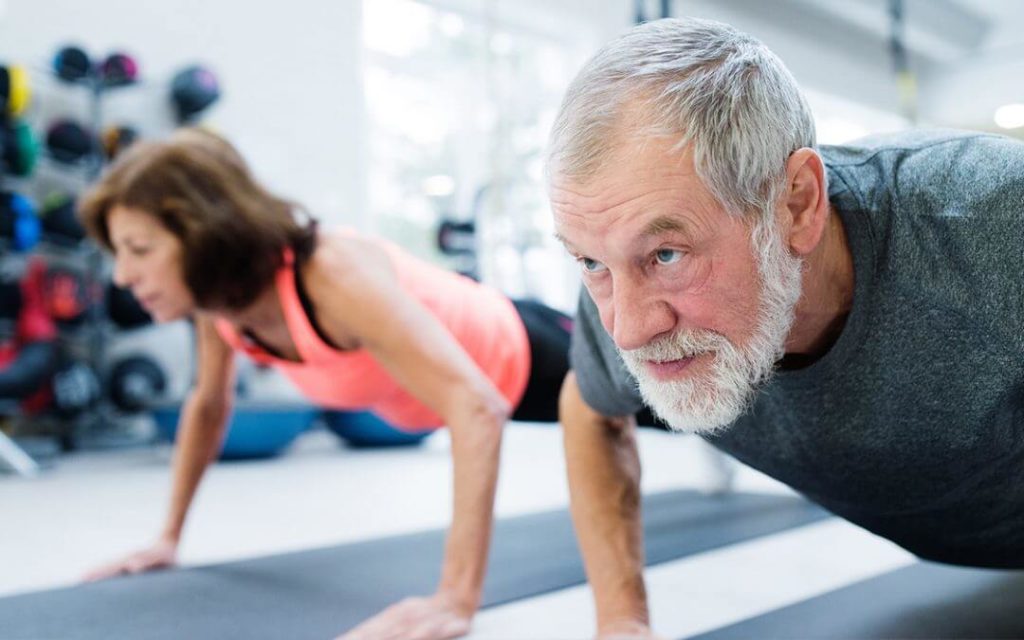
While building and maintaining strength are always important, Mr. Greg Bishop, a business-oriented corporate attorney in Park City, explains that physical strength is particularly important during retirement. He notes that in 2008, the U.S. Department of Health and Human Services (HHS) released its Physical Activities Guidelines for Americans. The Guidelines provided science-based advice on how physical activity promotes health and reduces the risk of chronic diseases. In preparing an updated edition, HHS appointed industry experts to serve on its 2018 advisory committee. The committee’s two-year responsibility was to analyze the available scientific data and either confirm the original Guidelines or suggest appropriate revisions. HHS then used the committee’s analysis to update its Guidelines, which were issued on November 2018.
Muscle-Strengthening Activities

The 2018 Guidelines confirm HHS’s earlier recommendations concerning the amount of physical activity that Americans need on a weekly basis. Among other things, the Guidelines recommend that adults should perform muscle-strengthening activities at least twice each week. HHS suggests the muscle-strengthening activities should be of moderate or greater intensity and include all of the major muscle groups. HHS notes that engaging in muscle-strengthening activities provides health benefits in addition to those that arise from aerobic exercise alone, which is also recommended.
Muscle-strengthening activities broadly refer to any activity that maintains or improves either (1) muscular strength (how much resistance can be overcome), (2) endurance (how many times or for how long the resistance can be overcome), or (3) power (how fast the resistance can be overcome). Muscle-strengthening activities include everyday activities as well as activities that use exercise equipment. Unfortunately, the Guidelines report that as of 2016, only 26% of men and 19% of women (ages 18 to 64) met the recommendations for both aerobic and muscle-strengthening exercise. The proportion of older adults (65 and older) who met the Guidelines was also very low (about 27% based on 2011-2012 data).
Involuntary Muscle Loss: Sarcopenia

Muscle-building exercise is particularly important for older adults because of muscle strength and size decline over time. While studies vary, there is general agreement that beginning at about age 30, total muscle mass decreases somewhere between 3% and 5% per decade. The rate of muscle decline increases even more at around the age of 60. The process – known as sarcopenia – will affect everyone who lives long enough.
The causes of sarcopenia are both complicated and not yet completely understood. Nevertheless, it is estimated that between 10% and 20% of people who are 65 years old have sarcopenia, increasing to about 50% by age 80. Studies indicate that the loss of muscle mass due to sarcopenia is preceded by a loss of muscle strength and function. Understandably, losing muscle strength and function makes it difficult to carry out normal activities, which in turn leads to decreased physical activity, which eventually results in decreased muscle mass. Left unchecked, it can be a vicious cycle.
It’s Never Too Late to Start Building Strength

Fortunately, older adults can increase muscle mass, strength, and function that is lost either as a result of inactivity or sarcopenia. Dr. Thomas W. Storer, director of exercise physiology and physical function lab at Brigham and Women’s Hospital (which is affiliated with Harvard), explains: “It takes work, dedication, and a plan, but it is never too late to rebuild muscle and maintain it.”
Mr. Bishop explains that although any muscle-strengthening activity is beneficial (under proper medical and exercise-training supervision, of course), older adults would be wise to focus their efforts on the seven key movements of functional fitness. Greg Glassman, the founder of CrossFit, explains that “the needs of Olympic athletes and our grandparents differ by degree, not kind. One needs functional competence to stay out of the nursing home. The other wants functional dominance to win medals.” The seven primary functional movements are:
- Deadlift: While a bodybuilder calls this functional movement a deadlift, an older adult may think of it more in the context of lifting up a grandchild. Either way, the movement involves leaning forward with the hips back, back straight, feet flat and forward, and then safely lifting something from near the ground. Despite the differences in the degree of difficulty between deadlifting and picking up your grandchild, the two are functionally the same movement.
2. Squat: Gym members refer to this movement like a squat, but older adults may think of it more as lowering themselves close to a low sitting position and then standing back up. The movement requires keeping the back straight while bending at the knees, with the hips back getting as low as possible (the goal is to get your butt lower than your knees). Again, squatting with a loaded barbell across your shoulders is harder than getting close to sitting down and then standing back up, but the two are essentially the same movement.
3. Lunge: An athlete calls this movement a lunge, but an older adult may think of it more in terms of getting up from a kneeling position. In general, the movement refers to a long, linear stride (either forward or backward) where the front knee is bent, and the back of the knee is close to touching the ground, then rising back up to a standing position. Once again, a lunge and getting up from a kneeling position are functionally the same motion.
4. Rotate: Rotation refers to the twisting motion that is generated from your core – turning from your pelvis to your ribcage, either to the left or the right. Rotation is a key functional movement that is involved in a number of different ways, from walking to looking over your shoulder as you back out of the driveway.
5. Push: Bodybuilders use this functional movement in a number of different contexts, each involving upper body muscles pushing something away from the body (or pushing the body away from something). Examples include an overhead press, a bench press, and a pushup. Older adults use this same functional movement when they push things away from their bodies (or push their bodies away from things), such as putting their carry-on luggage into an overhead bin on an airplane.
6. Pull: Athletes incorporate this functional movement anytime their upper body muscles pull things toward their bodies (or pull their bodies toward things). Examples of these exercises include a bent-over row and a pull-up. In contrast, older adults use this functional movement when they pull an object toward them (or pull their body toward something), such as lifting the garbage sack out of the kitchen garbage can.
7. Gait: Gait refers to walking or otherwise moving on foot (jogging, running, or sprinting). Gait incorporates a number of the prior movements and is a key functional movement for everyone.
Survival of the Fittest

Mr. Bishop suggests prior to and during retirement, muscle-strengthening exercise is less about creating trophy muscles – bulging biceps, six-pack abs, etc. – and more about avoiding muscle atrophy. Recent research published in the Journal of Gerontology: Medical Sciences found people with low muscle strength are 50% more likely to die prematurely. Lead researcher on the project, Kate Duchowny, reiterated the importance of older adults having strong muscles: “Maintaining muscle strength throughout life – and especially in later life – is extremely important for longevity and aging independently.”
Mr. Bishop recommends paying attention not just to the muscles you can see in the mirror, but to those that you can’t see – your posterior chain. These are the muscles on the backside of your body that help keep your body upright. They include your hamstrings, glutes, lower and upper back muscles, and shoulders. Exercises that strengthen your posterior chain include squats, deadlifts, rows, and pull-ups. Maintaining a strong posterior chain will allow you to meet the requirements of independent living for many years to come.
















